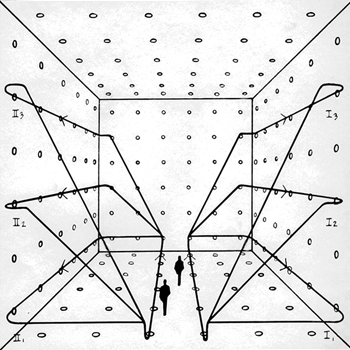the limits from inner integral to outer are
# sqrt(x^2 + y^2) le z le sqrt(2 - x^2 - y^2) qquad star #
# 0 le y le sqrt(1-x^2) qquad square#
#0 le x le 1 qquad triangle#
the limits in #triangle# restrict x to positive values between 0 and 1.
the upper limit in #square # is the equation of a circle in the xy plane of radius 1, ie #x^2 + y^2 = 1#.
And because y is limited as #y ge 0#, this the circle is in the first quadrant of the xy plane as shown in the drawing.
![enter image source here]()
This means that the azimuth angle #phi# is limited as #0 le phi le pi/2#
the first z limit of inner integral in #star# is
#z = sqrt(x^2 + y^2) #
This is a cone. For example in cylindrical it would be expressed as #z = r#. If you are doing spherical, I assume you must know cylindrical already.
The polar angle is #theta = pi/4# because it is #z=r# with a slope of #(dz)/(dr) = 1#. See the drawing below to note the symmetry.
For the second z limit:
#z = sqrt(2 - x^2 - y^2) implies z^2 +y^2 +z^2 = 2#.
In Cartesian, this is a sphere of radius #sqrt 2#; and in spherical that is expressed simply as #r = sqrt 2#. This is the classic ice cream cone in spherical coordinates
The really crucial bit here is to see that the tip of the cone is within the limits placed on x and y, namely the unit circle. If that was not the case, this would be an entirely different proposition. I hope that the sketch goes some way to showing that.
![enter image source here]()
if we next strip out the limits and begin to replace the integrand and the volume element (including the Jacobian), we have
#int_V xy \ dV#
which becomes
#int_V (r sin theta cos phi)(r sin theta sin phi) \ r^2 sin theta \ dr \ d theta \ d phi#
#= int_V sin^3 theta cos phi \ sin phi \ r^4 \ dr \ d theta \ d phi#
and with limits:
#= int_(theta = 0)^(pi/4) int_(phi = 0)^(pi/2) int_(r = 0)^(sqrt 2) sin^3 theta cos phi \ sin phi \ r^4 \ dr \ d theta \ d phi#

